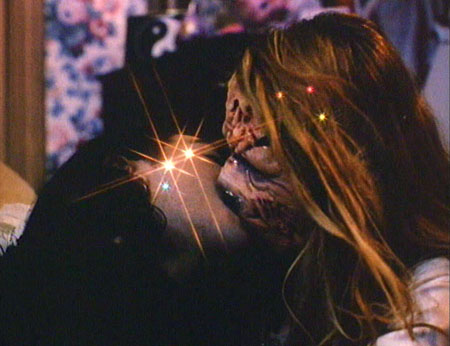Several years ago I came across a review of John Waters Pink Flamingos (1972) in which the reviewer made the tiresome claim that it wasn’t even a “real” movie (while reviewing it in a ‘movie’ review column). Such is the power of John Waters to provoke.
Waters admirers seem to be divided into two camps; pre-and post Hairspray (1988 ), although it really was Polyester (1981) that ushered in the new “Waters with a budget.” Waters certainly lost two inimitable “stars” in Divine and Edith Massey. While he has never lost his edge, and A Dirty Shame (2005) is a good example of that, Waters post-Polyester films are not mired as steeply in that idiosyncratic Waters’ universe.
John Waters is as innovative a director as Luis Buñuel. John Waters is as important a director as Orson Welles. John Waters is as true blooded Americana as John Ford. John Waters defines the word auteur like few others, creating a highly personal look at the world. It was that personal vision which brought his following to him, and not the other way around. When John Waters started making films, he did not develop a distribution strategy nor did he factor in who his target audience might be. He simply made visionary art. Of course, many argue the value of his vision, but it’s the lack of pretense in Waters that is unsettling. Throughout his body of work, he has been consistently stubborn in his refusal to cater to populist notions regarding pedestrian definitions of art and entertainment. That said, one finds Waters to be a remarkably narrative director and the 1975 Female Trouble may be his most assured narrative masterpiece.
 Female Trouble chronicles the rise and fall of an American legend, straight from the studio of Jerry Springer (long before Springer existed). Transvestite Divine plays quintessential white trash Baltimore rebel Dawn Davenport. Dawn hates school, her parents, and Christmas, so she can’t be all bad, right? She’s bad ass enough to run away from home and the parents who simply cannot recognize Continue reading FEMALE TROUBLE (1974)
Female Trouble chronicles the rise and fall of an American legend, straight from the studio of Jerry Springer (long before Springer existed). Transvestite Divine plays quintessential white trash Baltimore rebel Dawn Davenport. Dawn hates school, her parents, and Christmas, so she can’t be all bad, right? She’s bad ass enough to run away from home and the parents who simply cannot recognize Continue reading FEMALE TROUBLE (1974)



